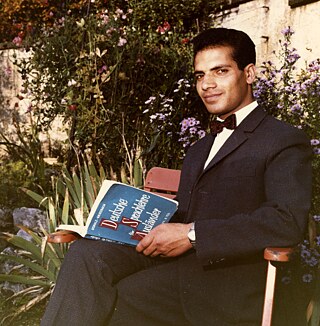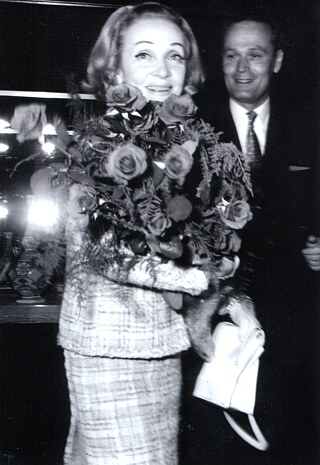Photo: Michael Friedel
© Dieter Glade GI Archiv
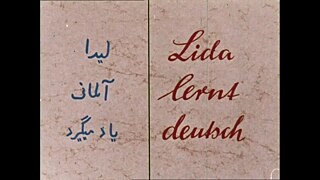
1953
The first German courses
„Des hob i ja gsogt.“
© Dieter Glade GI Archiv
1955
First edition of “Deutsche Sprachlehre für Ausländer”
Standard textbook with millions of copies in print
Learn more
1955
First edition of “Deutsche Sprachlehre für Ausländer”
Standard textbook with millions of copies in print
When publisher Ernst Hueber visits Dora Schulz at the Munich office, he hopes to persuade her to use a textbook from his publishing house in German classes. She turns the tables though and convinces him to accept a manuscript she wrote with Heinz Griesbach, the director of the Goethe-Institut Bad Reichenhall: The “Schulz-Griesbach” is born.
Improvisational talent is often called for in early years of the Goethe-Institut, and no one embodies this better than Dora Schulz, a former Deutsche Akademie lecturer and senior staff member at the Munich headquarters. She personally takes care of any improvements the classrooms need, sews curtains for the windows, and drafts a textbook with Heinz Griesbach because there are no suitable teaching materials available. Their efforts result in “Deutsche Sprachlehre für Ausländer” (German Grammar for Foreigners), the cornerstone of a double success story for both the Hueber publishing house and the Goethe-Institut in the field of German as a foreign language.
Founding institutes in North and West Africa
- 1958Tunis (Tunisia)
- 1960 Casablanca (Morocco)
- 1960 Rabat (Morocco)
- 1961Accra (Ghana)
- 1961Yaoundé (Cameroon)
- 1961Lomé (Togo)
- 1961Amman (Jordan)
- 1962Addis Abeba (Ethiopia)
- 1962Dar es Salaam (Tanzania)
- 1962Lagos (Nigeria)
- 1963Algier (Algeria)
- 1963Nairobi (Kenya)
-
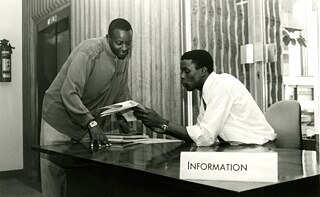
© Goethe-Institut Archiv
-
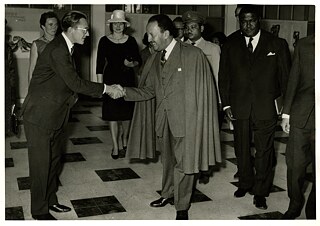
© Goethe-Institut Archiv
-

© Goethe-Institut Archiv
-
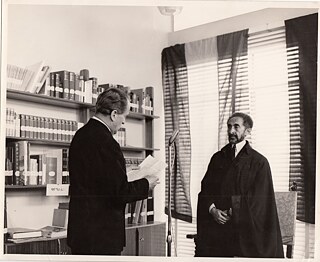
© Goethe-Institut Archiv
© Goethe-Institut
1963
The Goethe-Institut Algiers opens
The 100th Goethe-Institut?
Hurrah, the 100th international institute opens in Algiers! Or does it: In reality, the institute in Algiers is more likely the 102nd or 103rd – no one is really sure anymore today. But word has it that Algiers is supposedly a better fit for the public relations concept.
To this day, rumours still surround the opening of the 100th Goethe-Institut abroad. In all likelihood, the institute in the Algerian capital is not the 100th when it opens its doors in 1963. Either the large number of new institutes creates confusion, or the round number is a better public relations fit. It is an opportunity to highlight the Goethe-Institut’s increased activities in North-western Africa and the Near East and mention the institutes previously opened in Beirut, Teheran and Amman. The PR campaign is successful: Broadcaster ARD considers the story worthy of a report on its cultural programme.
Photo: Michael Friedel
1964
The Albert Mangelsdorff Quintet on tour in Asia
Jazz as a prime export
“Before this tour, I always assumed they were just playing the wrong notes.” This is what Albert Mangelsdorff thinks of Asian music until the trombonist plays 50 concerts in 20 Asian countries for the Goethe-Institut. Inspired by the local music, he releases “Now Jazz Ramwong” – one of a few jazz albums to come out of tours organized by the Goethe-Institut in the 60s.
-

The word “Ramwong” in the 1964 album title refers to a Thai folk dance. Photo: CBS/Pacific Jazz/Amiga/L+R Records -
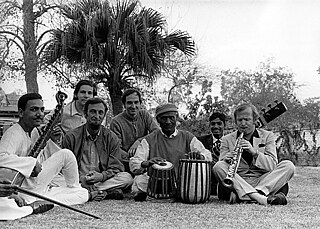
Jam session with Pakistani musicians: The Klaus Doldinger Quartet is also on a Goethe-Institut tour of Asia in 1969. Photo: Michael Friedel -

Saxophonist Doldinger highlights his role as a jazz ambassador with the 1969 “Doldinger – The Ambassador” album. Photo: CBS/Liberty Records -
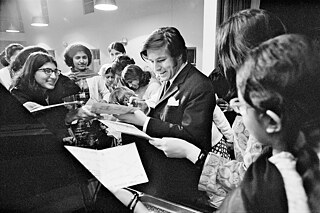
Arrival in Delhi in 1975: Mangelsdorff and eleven other jazz musicians from Germany go on tour with the Goethe-Institut in the 60s and 70s as The German All Stars. Photo: Michael Friedel -
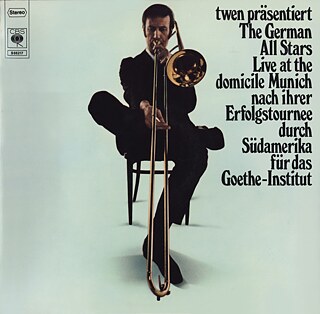
After their tour through South America, The German All Stars record this album in Munich in 1969. Photo: CBS
Photo: Michael Friedel
1965
Marlene Dietrich graces the Goethe-Institut Paris
“The Blue Angel”
One of the greatest international stars of the day attends a showing of “The Blue Angel” organised by the Goethe-Institut Paris: Marlene Dietrich. The crush of people waiting to get in is so large it takes three police officers for crowd control at the entrance.
Her role as Lola in “The Blue Angel” opens the doors of Hollywood to Marlene Dietrich, who becomes an extraordinary international star. Unwilling to support National Socialism, she turns her back on Germany in the 1930s and takes US citizenship. She does not return to Europe until the 1960s, where she makes Paris her new home. In 1965, she creates a small sensation for the local Goethe-Institut when she personally attends a showing of “The Blue Angel” at the Musée des Arts Decoratifs.
Photo: Michael Friedel
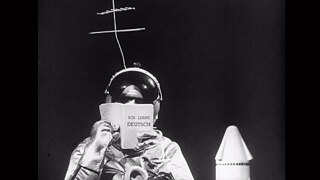
1966
The “Guten Tag” teaching film series
“This rocket is not going to Beta”
Photo: Michael Friedel
© Goethe-Institut Archiv
